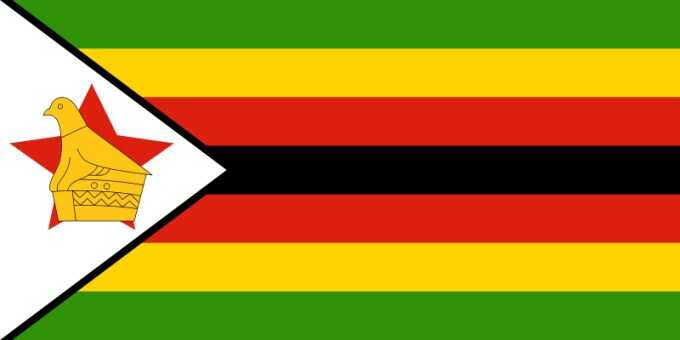
Zimbabwe is set to get an injection of around US$1 billion, its allocation of Special Drawing Rights (SDRs) from the International Monetary Fund (IMF) today, with part of the money earmarked for health, manufacturing, agriculture, education and mining.
IMF member countries started getting their shares of the new special issue SDRs totalling about US$650 billion yesterday.
The IMF has made the new issue of paper gold to help the global economy cope with the major setback caused by Covid-19 and the need to rebuild reserves.
The issue is distributed according to each country’s shareholding in the IMF.
SDRs are not a currency, but an international reserve asset created by the IMF to supplement official reserves of member countries.
They can provide countries with liquidity, and with Zimbabwe’s economic growth expected to hit about 7,8 per cent this year, the SDR allocation is expected to play a critical role.
Finance and Economic Development Minister Professor Mthuli Ncube told The Herald yesterday that the SDRs should “be in our account by tomorrow”.
“We have about US$1 billion. The idea is that the SDRs will be channelled towards areas that have been affected by Covid-19,” said Prof Ncube.
“So we will invest the SDRs in the health, agriculture, education, roads, industry and manufacturing, mining sectors, and supporting the vulnerable.
“In terms of the health sector, we will channel the SDRs towards procuring more Covid-19 vaccines. We will also invest in hospital infrastructure especially at our large referral central hospitals, and the equipment for the hospitals.”
Prof Ncube said the IMF’s declaration that Zimbabwe will have access to deploy almost US$1 billion in SDRs, “is just the booster this economy needs”.
“This move is a truly encouraging vote of confidence from the international community in the new Zimbabwe, its reforms, and its positive direction.”
For education, Government is targeting to build at least eight boarding schools in rural areas. These boarding schools were vital to deliver education and a better quality of life for rural children, particularly for low-income groups. The schools will be equipped with state-of-the-art solar-power generation to back up electricity from the national grid.
Turning to social protection, Prof Ncube said some of the SDRs will go towards supporting food-for-work and cash-for-work programmes as well as helping those hit hard by the lockdowns.
Some vulnerable people, whose livelihoods were devastated by Covid-19 following the imposition of lockdown measures that sought to limit movement, will also get cash transfers. An Agriculture Revolving Fund will be set up to support horticulture businesses that will in turn help Zimbabwe generate more foreign currency from exports.
“It is of the utmost importance however that these funds provide a return; the SDRs must grow, and as they grow they drive the economy in the process. There are three sub-sectors within Zimbabwe’s productive sector which require urgent investment and upgrading: agriculture, industry and manufacturing, and mining.
“Zimbabwe’s agriculture is historically the backbone of our economy. For many it is all they know. So, we must invest in efficiency, technology, and improving yields. One initiative is to support a ‘Revolving Fund’, which will support flora culture, which is the growing and selling of flowers, blueberries, and macadamia, among other cash crops or water culture crops.”
Profits could then be used to repay debts and further invested in the most advanced techniques and technologies.
Government will also invest part of the funds in irrigation equipment as part of measures to climate-proof the agriculture sector, already adversely affected by climate change. For the manufacturing sector, a Revolving Retooling Fund will be set up targeting key value chains such as leather.
Earlier this year, the Zimbabwe Leather Sector Strategy (2021-2030) was launched as the Second Republic sees it as a low-hanging fruit given the country’s competitive advantage in livestock and crop production, which are key sources of raw materials.
In terms of the mining sector, Prof Ncube said the gold sector was another area with huge potential, with small-scale producers digging and panning about 60 percent of national gold output.
The Government wants to invest in at least 10 gold centres across the country, with each centre being a one-stop shop, which will allow the miner to have access to equipment and transportation and a regulated mechanism through which they can get paid.
This will help the Government plug leaks to smugglers and other illicit buyers while supporting the young small-scale miners who need support and capital. The support will also allow a more transparent process for the purchasers of the gold, improving the Know-Your-Customer process as the lack of clarity has been a potential impediment to sector growth.
Small-scale miners have challenges operating when it is raining as they do not have water pumps, while others would want hammer mills and compressors to boost their operations. Hiring such equipment gobbles most of their revenue, resulting in some of them entering into slave contracts with investors or sponsors who in return for leading the equipment demand the miners sell the gold to them.
Usually, such investors do not sell the gold to Fidelity Printers and Refiners, which prejudices the country of both the mineral and revenue.
Other SDRs are earmarked for roads especially in areas where there is potential for tourism or agricultural sector development. Prof Ncube said the roads should have the potential for tolling to enable the country to recoup its investment.
The housing sector is also primed to get support as the Government seeks to reduce the housing backlog of about 1,3 million.
“We need to stretch the use of the SDRs. We need to support macro-economic stability. Setting aside resources to buttress the currency can ensure that the downward trend in inflation is maintained,” said Prof Ncube.

